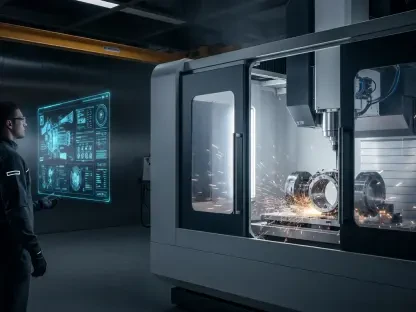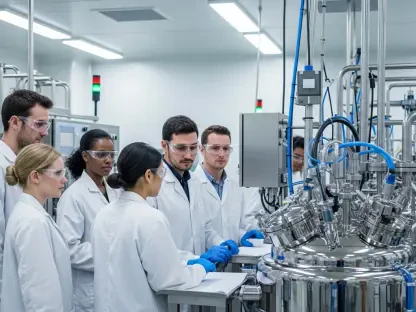Initiating a monumental shift in technological power, China has rapidly evolved into a preeminent force in the global robotics sphere, eclipsing former leaders like the United States, Germany, and Japan. This transition is not just a simple advancement in robotics technology; it signifies a strategic fusion of artificial intelligence (AI) and cost-effective manufacturing prowess. By leveraging these combined strengths, China has managed to develop a competitive advantage, offering the world innovative, intelligent, and affordable robotics solutions. This article examines China’s journey toward becoming a global frontrunner in the robotics industry, exploring the factors driving its remarkable growth and the implications this rise holds for global stakeholders.
The Fusion of AI and Smart Manufacturing
AI-Enabled Innovation
Central to China’s rise is its ability to integrate AI with an already robust smart manufacturing infrastructure. A report by Moody’s Ratings highlights how this unique combination has positioned China as a provider of high-quality yet cost-effective robotics solutions worldwide. The continued development of essential technologies like 5G, advanced semiconductors, sensors, and battery innovations underpins this capability, supporting the production of diverse robotic models. These include not only industrial robots but also pioneering AI-driven humanoid models, each contributing to China’s expanding influence in the robotics sector. Such technological advancements have enabled China to consistently lead in new installations, challenging older technological giants.
The commitment to innovation is evident in China’s escalating robot density, a metric indicating the number of robots per 10,000 employees. This figure surged dramatically between 2017 and 2023, reflecting the nation’s strategic emphasis on automation and intelligent manufacturing across various industries. As China’s growth in robot density outpaces major players, it underlines the country’s focused investment in automation as a key component of its economic strategy. Analysts point to this data as evidence of how China’s technological growth drives both economic development and competitive positioning on a global scale.
Economic Impacts and Market Expansion
China’s march toward robotics supremacy is also characterized by significant economic implications. According to projections from Morgan Stanley, the country’s robotics market is predicted to more than double in the coming years, outpacing global growth rates with an annual expansion of 23%. This rapid rise underscores China’s pivotal role as a hub of innovation and its ability to influence market dynamics. Notably, the aggressive development in high-tech arenas, such as new energy vehicles, solar panels, and lithium-ion batteries, forms a critical part of this expansion strategy. The impressive growth in these sectors, marked by substantial year-on-year increases, highlights China’s determination to cement its leadership position.
By leveraging its stronghold in industrial robotics—a sector where China has traditionally excelled—the country continues to capture a significant market share. In 2023, China maintained its status as the world’s largest market for industrial robots, with high adoption rates across critical industries, including automotive, electronics, and metal processing. With forecasts predicting continued growth in the industrial robotics market, Chinese companies are strategically positioned to capitalize on this momentum, leveraging automation to address challenges posed by rising labor costs and an aging workforce.
Expanding Horizons: Smart Manufacturing and Humanoid Robots
The Role of Smart Manufacturing
The surge in smart manufacturing capabilities is a pivotal factor in China’s burgeoning robotics industry. Companies increasingly turn to advanced robotics solutions to enhance productivity, ensure consistent quality, and optimize efficiency within their operations. Swiss engineering firm ABB Ltd exemplifies this trend with its introduction of new AI- and cloud-based robotic offerings tailored to small- and medium-sized businesses in 2025. These innovations facilitate the adoption of scalable automation, enabling enterprises to bolster productivity without the need for major infrastructural overhauls. The case of ABB highlights how strategic partnerships and technological advancements drive innovation within the industry.
The strategic emphasis on using robotics in smart manufacturing serves not only as a catalyst for industrial growth but also as a mechanism for addressing workforce challenges. By automating repetitive tasks and integrating sophisticated robotics solutions, companies can counterbalance the effects of a shrinking labor pool and increase overall operational effectiveness. As the demand for these technologies grows, so too does China’s influence, with domestic and international companies increasingly looking to Chinese innovations for solutions.
Breakthroughs in Humanoid Robotics
The development of humanoid and AI-powered robots represents a significant area of interest and advancement within China’s robotics landscape. As China faces demographic shifts, these advanced robots provide potential solutions to labor shortages, positioning the nation at the forefront of human-like automation technologies. Humanoid robots, designed to emulate human physicality and behavior, offer versatility beyond traditional manufacturing applications. China’s leadership in this field is underscored by its dominance in patent filings, far exceeding those of the United States, showcasing its innovative edge.
Collaborations between firms such as Baidu and UBTech Robotics illustrate how merging AI with robotics hardware can yield groundbreaking developments. By enhancing the capabilities of humanoid robots through AI integration, these partnerships are transforming what was once speculative technology into practical applications. The integration of intelligent systems like Baidu’s Ernie Bot into machines like UBTech’s Walker S robot epitomizes the convergence of cutting-edge AI technologies with advanced robotics, further solidifying China’s position as a leader in this expanding domain.
Global Competition and Challenges
Rise of Domestic Suppliers
As China solidifies its position as a global robotics leader, the effects ripple through international markets, intensifying competition between domestic and foreign robotic manufacturers. China’s dedication to mass production efficiency, innovative supply chains, and savvy cost management allows it to challenge long-standing market leaders. Foreign manufacturers, once dominant, face declining market shares amid China’s continued growth. This transition is exemplified by the shift in market dynamics over recent years, with domestic suppliers capturing notable local market share, growing significantly from 29% to 47% within a decade.
This period of rapid technological advancement and industrial growth also reveals notable gains in export expansion for Chinese robotics companies. These trends illustrate China’s escalating influence, driven by both strategic economic planning and an unwavering commitment to research and innovation. As China increases its domestic production capacity, the scale and scope of its robotic manufacturing will likely exert pressure on competing global brands.
Addressing Ethical Considerations
While China’s progression in robotics is laudable, it is not without challenges. The rapid integration of robots into industries raises concerns about potential job displacement and the ethical implications of autonomous machines. As companies integrate advanced robotics technologies, the workforce landscape shifts, necessitating careful navigation of potential socio-economic impacts. Moody’s notes the importance of considering these factors, underscoring the need for responsible and strategic decision-making within the sector.
Addressing these challenges will require balanced considerations between innovation and ethical responsibility. Thoughtful policy-making, emphasizing reskilling and upskilling initiatives, could mitigate some potential negative effects. As China leads the charge in robotics technology, it maintains the responsibility of ensuring these advancements are deployed in ways that positively contribute to society, fostering sustainable and ethical growth in the process.
Strategic Future Directions
China has initiated a monumental shift, emerging as a dominant force in the global robotics realm, surpassing previous leaders like the U.S., Germany, and Japan. This evolution marks a significant stride not just in robotics technology but also in their strategic integration of artificial intelligence (AI) with economically efficient manufacturing. By capitalizing on these advantages, China has carved out a competitive edge, delivering groundbreaking, smart, and cost-friendly robotics solutions to the globe. This transformation is not merely technological advancement but a strategic maneuver that integrates AI’s cutting-edge capabilities with China’s manufacturing strengths. The journey toward becoming a leader in robotics has been driven by several factors, including substantial investment in research and development, government support, and a strong focus on education and training in related fields. Understanding this evolution provides insight into the broader implications for international stakeholders, as China’s rise in robotics reshapes the competitive landscape worldwide.









